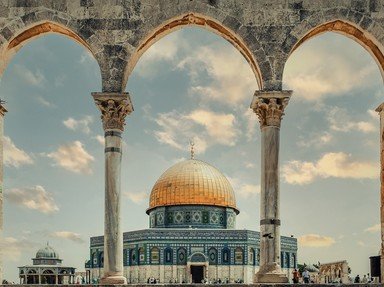Quiz Answer Key and Fun Facts
1. Beit Shemesh is a modern, thriving, city. However, it is mentioned several times in the Bible. The most significant reference to Beit Shemesh appears in Samuel I. According to the Book of Samuel, what happened to the Ark of the Covenant in Beit Shemesh?
2. Where is Beit Shemesh located?
3. When did Beit Shemesh become a city?
4. The National Parks Service maintain a park in Beit Shemesh. What is the main attraction of this park?
5. The Peli family established a park in Beit Shemesh to honor their son, Golan, who fell in the line of duty. What kind of park is it?
6. Two of the communities closest to Beit Shemesh are Kibbutz Tzora and Moshav Eshtaol. The intersection closest to these settlements is called "Samson Junction". What is the reason for this name?
7. Just outside of Beit Shemesh, on the old Tel Aviv Jerusalem highway, is a tomb. According to legend, who is buried in this tomb?
8. There is an important archaeological dig on a hill outside of Beit Shemesh. Archaeologists found something unique to biblical sites on this tel. What is it?
9. What is the major crop grown in the Beit Shemesh area?
10. In 1997, King Hussein of Jordan visited Beit Shemesh. What was the reason for his visit?
Source: Author
janetgool
This quiz was reviewed by FunTrivia editor
Leau before going online.
Any errors found in FunTrivia content are routinely corrected through our feedback system.
